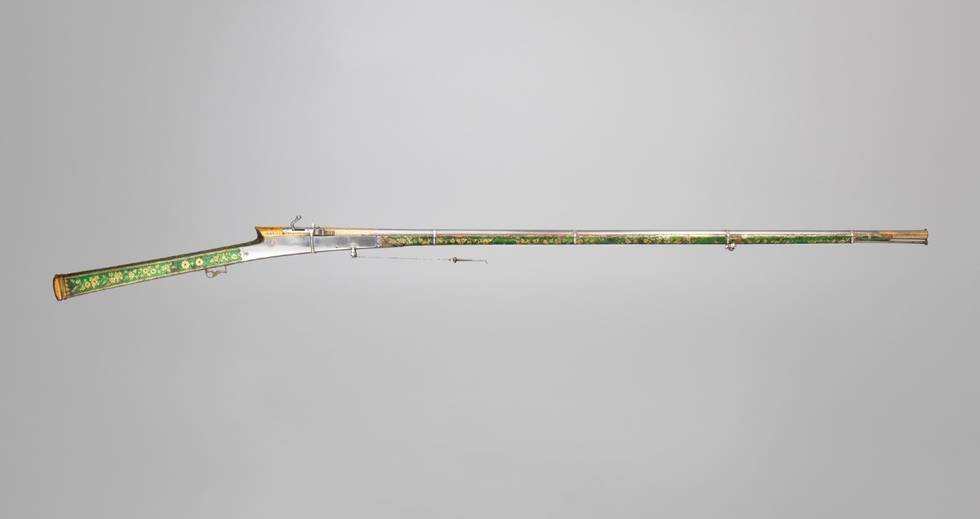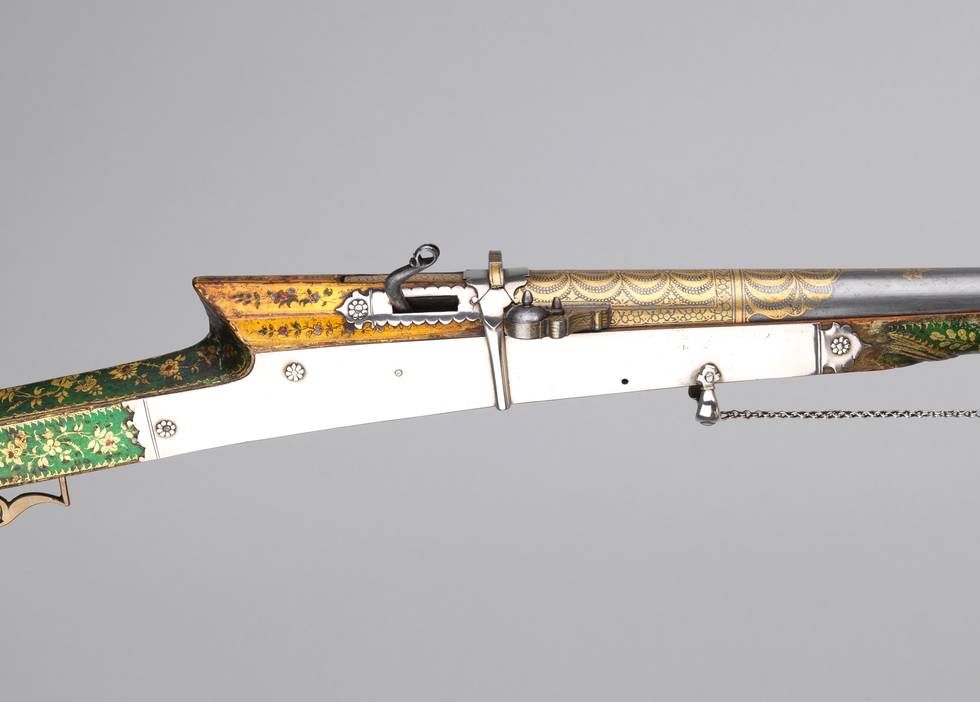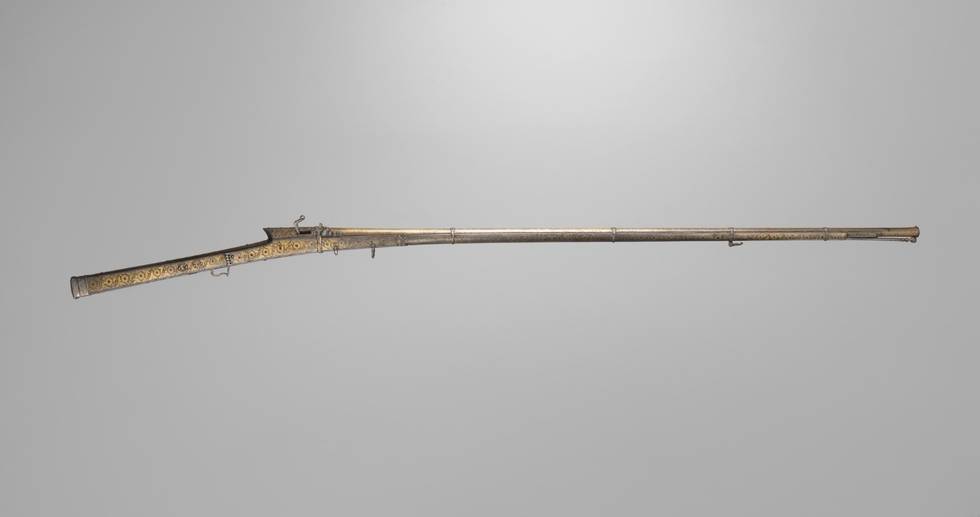
Location: Lahore, Punjab
Date: 19th century
Materials: Steel, gold, silver, wood, pigment and lacquer
Measurements: 169 cm
Inv No: OA1983
Firearm usage in South Asia can be traced as far back as the 15th century. While matchlocks were phased out in places like Europe and the Ottoman Empire in the 17th and 18th centuries, they remained the firearm of choice throughout the Indian subcontinent well into the 19th century, where they were used alongside flintlock weapons.
The usual form of the matchlock manufactured in Punjab was called banduk toradar. While banduk means firearm, toradar is believed to come from the word tor, the elephant creeper tree, which was used to make slow-burning matches. This smouldering match cord would have been wrapped around the stock of the gun and held by a lever (serpentine). When the trigger was pulled, the lever would drop the lit match cord into the flash pan containing priming powder, thus igniting the main charge.

The stock of the matchlock pictured above is painted with lacquered green and red floral patterns and decorated with gold leaf. The matchlock pictured below is decorated in gold kuftgari floral motifs. Kuftgari refers to the process of applying the golden designs by first crosshatching the metal surface and then hammering gold wire onto the surface. While the decorative designs of the guns differ, their inner workings are identically constructed.
The long and slender shape of the stock, on both guns, is characteristic of matchlocks produced in Lahore. Similar examples can be found in the Royal Armouries (XXVIF.42 and XXVIF.119).

Matchlock musket
Location: Lahore, Punjab
Date: 19th century
Materials: Steel, gold, silver and wood
Measurements: 169 cm
Inv No: OA1984